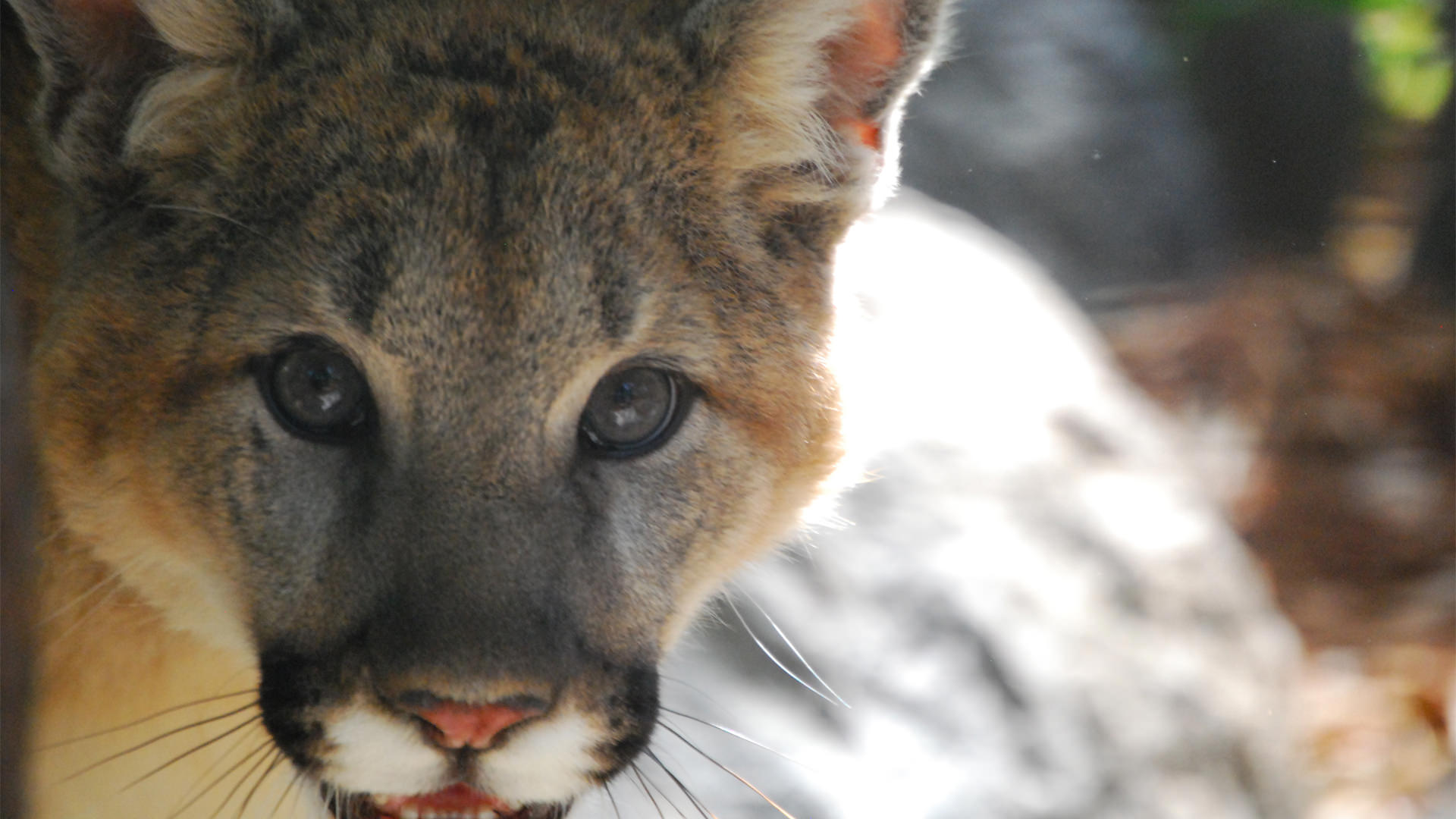
Cougars have the largest geographic range of any mammal in the Western Hemisphere (other than humans, of course). They range from Canada through the United States and into South America. That large range is the reason the cougar has so many names: lots of different people, languages, and cultures to name the animal!
Cougars have bodies that are long and slender with long, powerful hind legs, which are helpful when hunting. The fur covering their bodies ranges from yellowish brown to grayish brown, with their underbellies being lighter in color. They ambush their prey by high speed running and jumping. They can reach up to 20 feet in one leap! They main source of food is ungulates, but cougars will occasionally eat smaller prey items such as squirrel, raccoon, opossums, rabbits, and birds. Cougars are solitary cats, coming together only to mate. The young are born helpless and are cared for by their mothers for up to two years. Young cougars have spots which help them blend in with their surroundings. They are listed as least concern by the IUCN, but the Florida panther, a subspecies, has a population of less than 200 left in Southern Florida, and is listed as Endangered by federal and state wildlife entities.

Our cougar, Boone, enjoys scents from other animals here at the Zoo for enrichment. He especially enjoy the scent of our kinkajous, otters, and fossas.

Christina
The cougar has more names than any other cat. Some are puma, mountain lion, panther, catamount.
Canada into North, Central and South America
Habitat varies widely, habitat with dense under-story vegetation
75–159 lbs
Carnivorous diet varying by habitat range
Top predators, but young are preyed on by other cougars
Camouflage, claws and teeth
3–4 cubs on average
Least Concern
Up to 20 years
